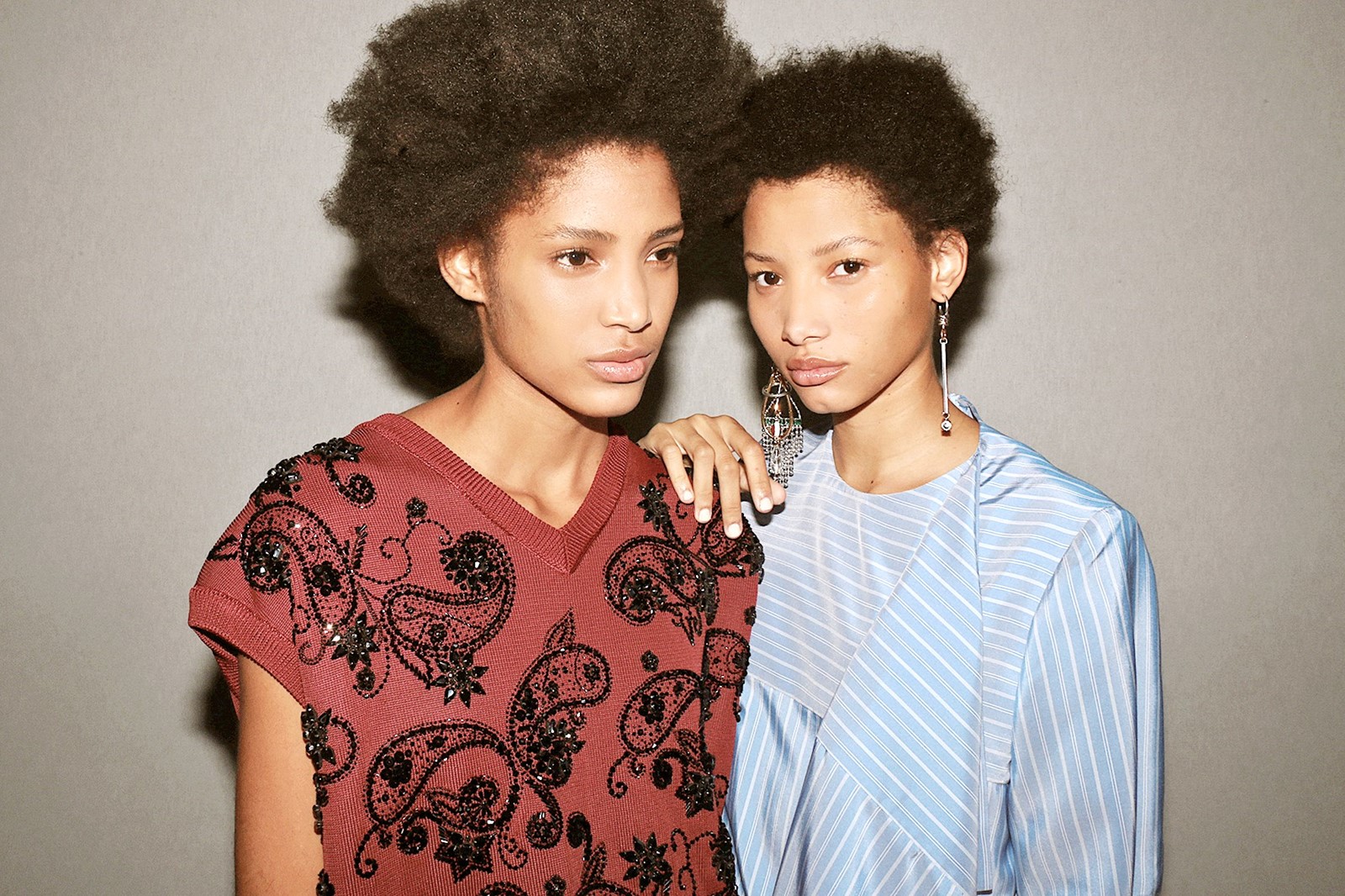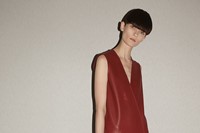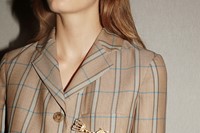There is a particular silhouette familiar to anyone who has ever attended a girl’s school: a skirt than bunches around the waist, made briefly bulky by the layers of fabric that appear when you roll it from a knee-length into a mini, and the wonky hem that subsequently appears. At my school, employing such adjustments was practically a daily ritual: once the day was done and we could finally go and meet the boys down the hill, we’d go into the loo to shorten our skirts, untuck our shirts to conceal their new waistband and stack on some bracelets (they’d be confiscated if seen during the day). This sort of adolescent rebellion was the foundation of Johnny Coca’s Mulberry collection this season, which came complete with that funny synthetic fabric that you scarcely find outside of the John Lewis uniform department (actually, it was all sourced from traditional British uniformers), asymmetric skirts and the phenomenon that is Lotta Volkova – fashion’s stylist du jour, and whose work at Vetements and Balenciaga has recently changed the trajectory of fashion. It was, as the tagline to the collection suggested, “uniforms, without uniformity.”
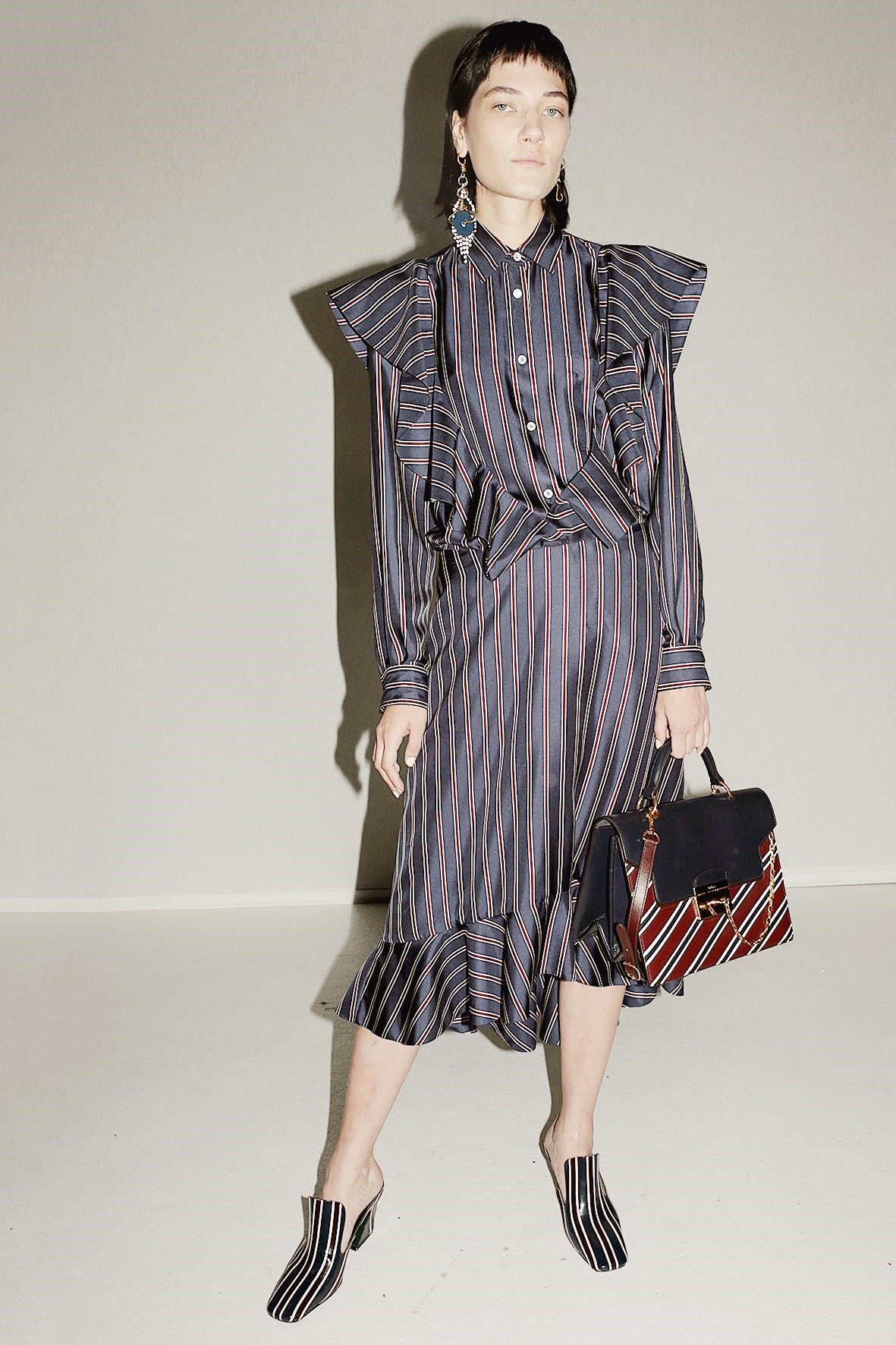

Britain Reigns
Neither Coca, nor Volkova, are actually Brits – which means that their version of British culture is one that appears to revel in our banality. The stripes of school ties, for example, were fetishised in a fashion unlikely to come from someone who had to wear one every day for a decade, and became the prints of shoes, bags, blazers and eveningwear alike. Over the speakers, a very proper accent instructed P.E. class exercises, which was enough to inspire anxiety in anyone who ever hid out in the equipment cupboard to avoid such activities, but charming nonetheless. There were patent coats, “for when it rains in England,” Mitford paisleys sometimes rendered in sparkling gems, and Prince of Wales check turned into Princess Diana two-piece suits. It was a veritable medley of the staples of British culture, which could have felt confused but somehow just worked.
“British schools were my references,” said Coca, “but I wanted to look at the different style tribes within them: the sporty kids, the posh kids, the rowing kids.” And that’s precisely what it seemed – when the girls walked out in their finale procession, they appeared like the coolest assembly line-up imaginable: distinctly different little groups of teenage insouciance, but dressed with the refinement that luxury ought to facilitate. “When you’re a teenager you want to personalise everything,” said Coca, “and British eccentricity is interesting to me. In London, you see so many different people, so many different attitudes – there is no mode of being the same. You can have a strong personality, and it is normal; you don’t need to care about your what your neighbours think.” He’s quite right, that is what makes it so good here – and maybe sometimes it takes a transplant to remind us of that.

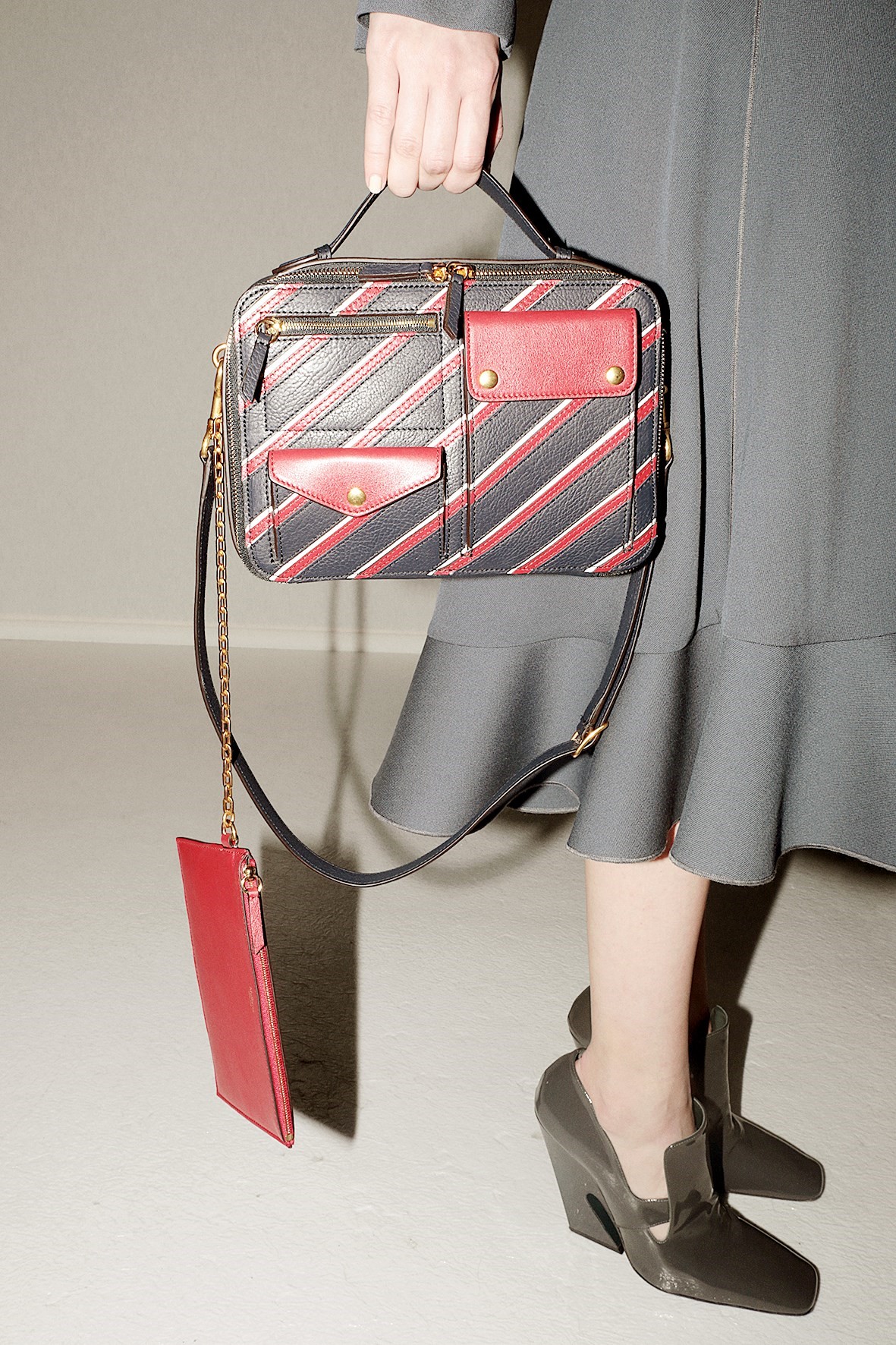
Accessorise, Accessorise, Accessorise
In line with this proclivity towards eclecticism, Coca created an assortment of jewellery to customise his British traditionalism: little brooches of the sort that “you might have stolen from your mother,” and lots of punky bracelets and pendants to hang from bags or wrists which took the shape of pencils and paperclips or hands signing different gestures. “This is jewellery as a study of language, a new way of expressing individuality,” read the show notes, and the pieces seemed perfectly suited to the magpie sensibilities of schoolgirls and current fashion acolytes alike. We’ve all seen how resoundingly successful Gucci has been in that domain: here, the trinkets were equally good.
Then, the abundant bags and shoes – Mulberry has made its name, after all, as the largest manufacturer of leather goods in the UK, and designers of such phenomena as the Alexa and the Bayswater. The attractiveness of little leather lunchboxes that appeared on model’s arms, alongside weekend bags in crisp, first-day-of-school leather (a version of the traditional Mulberry Piccadilly) and the new, practically perfect Tyndale, show little indication that such success will wane any time soon. The shoes were particularly appealing – chic and weird, with 18th-century ruffles and fluted heels that showed just how influential Coca was at Céline. We moved far away from a British brogue, and into something determinedly directional – and Coca is clearly qualified to update Mulberry’s heritage in this sphere. Take the looks apart, and the pieces themselves will suit Sloane Square as well as they will Shoreditch – but it will be interesting to see if the Philo devotees will follow, and whether his update of the brand is enough for the fashion crowd.
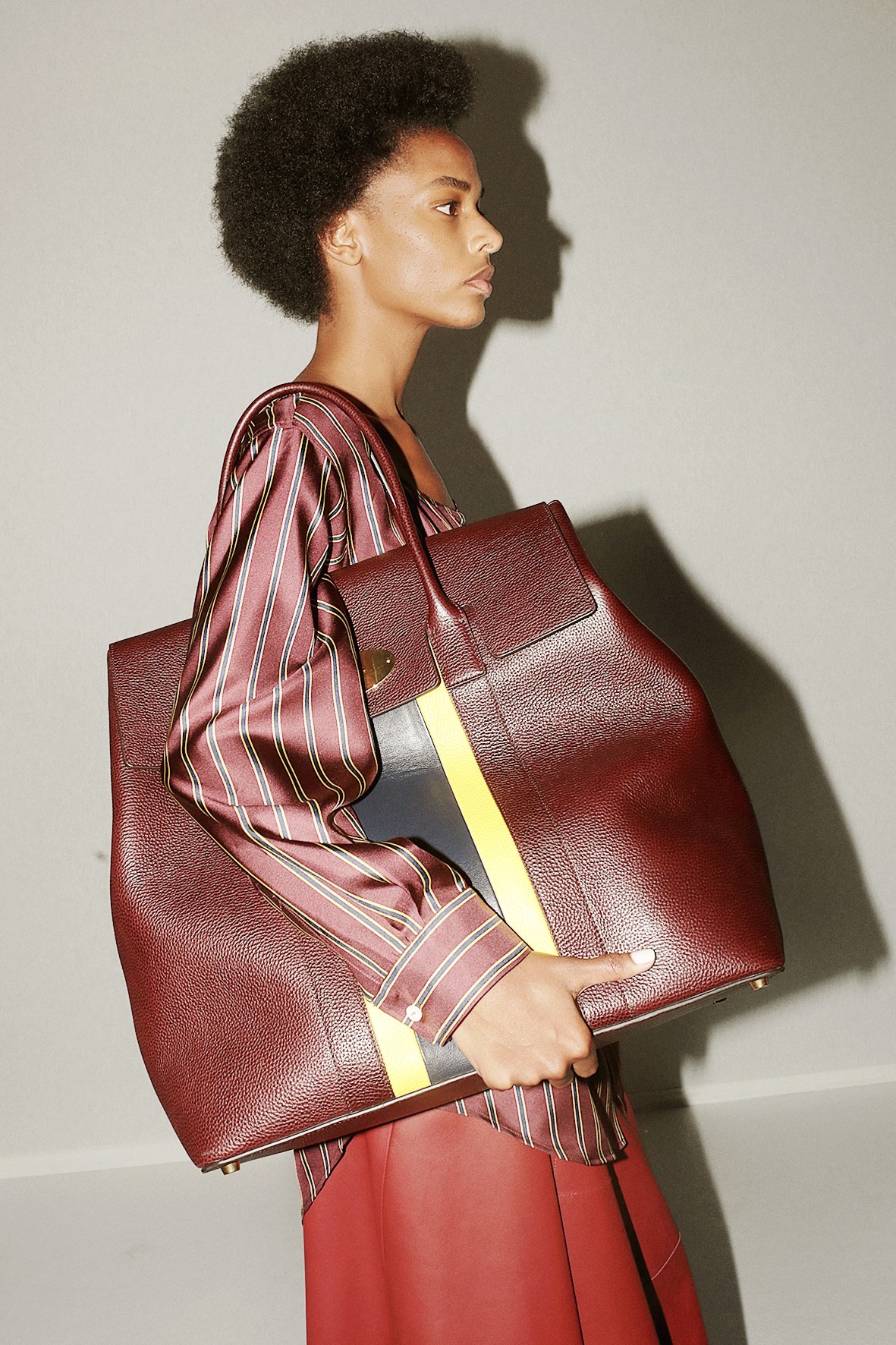
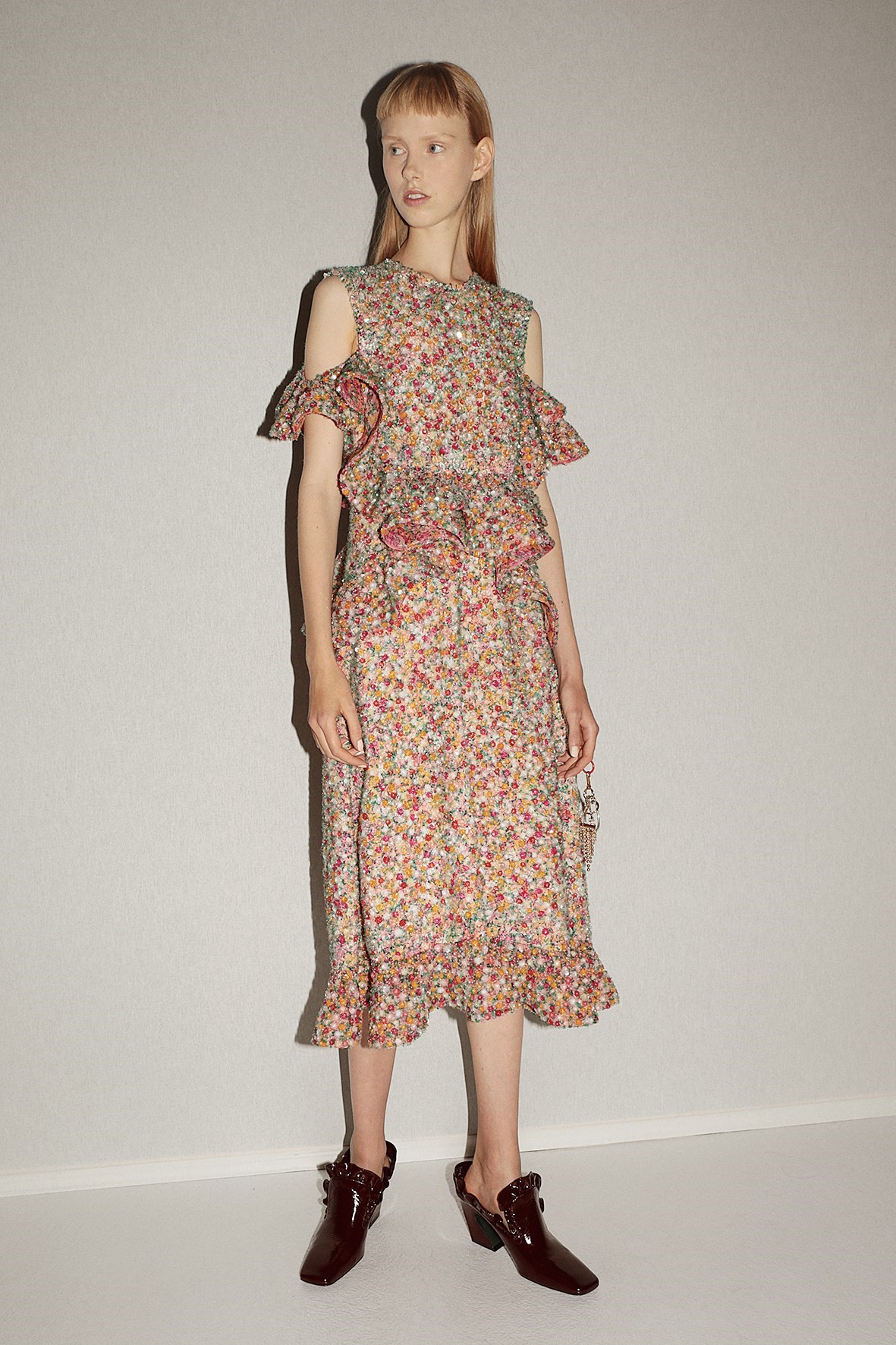
A Lesson in Teamwork
Interestingly, alongside Volkova, Coca employed Inge Grognard – the wonderfully creative make-up artist who hails from Martin Margiela’s clan (and isn’t that aesthetic proving particularly relevant right now?), alongside Gary Gill – hairstylist at Balenciaga and Vetements. Here, they both turned their hands towards a less avant-garde approach than might be ordinarily expected – the bare-faced girls had just rolled out of bed in time for their first lesson, “they might still have pillow prints on their cheeks,” giggled Coca – but their presence showed savvy decision-making on his part; he clearly understands that a collection is a team effort.
To see a powerhouse heritage brand tap into the current fashion climate with aplomb, rather than simply adopting trendy silhouettes, is remarkably invigorating, and here Coca showed a refreshing honesty in his efforts to appeal to a new demographic while preserving the dedicated Mulberry customer. “School’s in,” proclaimed the brand's Polaroid-shot Instagram posts (they have also updated their image in the digital sphere). Mulberry clearly is, too.
